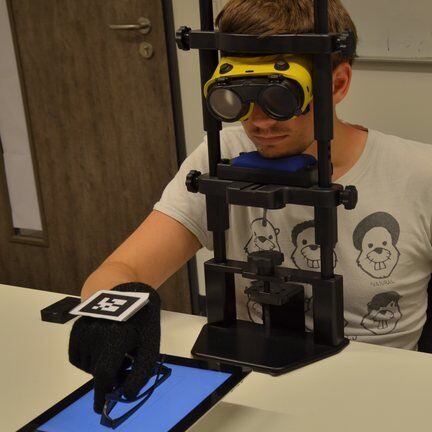Robot Grasping by Exploiting Compliance and Environmental Constraints

Clemens Eppner
Titel: Robot Grasping by Exploiting Compliance and Environmental Constraints
Zusammenfassung:
Greifen ist eine entscheidende Fähigkeit für jedes autonome System, das die physische Welt verändern muss. Die Komplexität des Robotergreifens ergibt sich aus der Tatsache, dass jede Lösung verschiedene Komponenten umfasst: Das Design der Hand, die Steuerung, die Wahrnehmung und die Planung wirken sich alle auf den Erfolg eines Greifvorgangs aus. Abgesehen von der Auswahl von Lösungen für genau definierte industrielle Szenarien ist das Greifen in einer unstrukturierten Umgebung immer noch ein offenes Problem.
In dieser Arbeit machen wir uns zwei allgemeine Eigenschaften zunutze, um Algorithmen für die Greifplanung zu entwickeln: die Nachgiebigkeit von Roboterhänden und die Steifigkeit der Umgebung, die ein Objekt umgibt. Wir betrachten die Nachgiebigkeit der Hand als eine Möglichkeit zur lokalen Anpassung des Greifprozesses, die keine explizite Planung oder Überlegung erfordert. Daher untersuchen wir Algorithmen, die die Nachgiebigkeit der Hände berücksichtigen, um Greifvorgänge zu synthetisieren. Die Nutzung der Nachgiebigkeit der Hand vereinfacht auch die Wahrnehmung, da keine präzisen geometrischen Objektmodelle erforderlich sind. Ergänzend zur Nachgiebigkeit der Hand ist die Idee, die Steifigkeit der Umgebung auszunutzen. In der realen Welt kommen Objekte nie isoliert vor. Sie befinden sich in einem Umgebungskontext: auf einem Tisch, in einem Regal, in einer Schublade, usw. Roboter-Greifstrategien können vom Kontakt mit der Umgebung profitieren, indem sie Objekte an Kanten ziehen, sie gegen Oberflächen drücken usw. Wir nennen dieses Prinzip die Ausnutzung von Umgebungseinschränkungen. Wir stellen Algorithmen für die Greifplanung vor, die die Ausnutzung von Umgebungseinschränkungen erkennen und in eine Reihenfolge bringen.
Wir untersuchen diese beiden Ideen, indem wir uns auf die Beziehungen zwischen den drei Hauptbestandteilen des Greifproblems konzentrieren: Hand, Objekt und Umgebung. Wir zeigen, dass sich die Interaktionen zwischen anpassungsfähigen Händen und Objekten für niedrigdimensionale Greifaktionen eignen. Basierend auf dieser Erkenntnis entwickeln wir zwei Algorithmen zur Greifplanung, die mit minimalem Vorwissen Compliance-Modi auf rohe Sensorsignale abbilden. Als nächstes konzentrieren wir uns auf die Interaktionen zwischen Hand und Umgebung. Wir zeigen, dass der Kontakt mit der Umgebung den Erfolg bei Bewegungs- und Greifaufgaben verbessern kann. Wir schließen unsere Untersuchungen ab, indem wir die Wechselwirkungen zwischen allen drei Faktoren berücksichtigen: Hand, Objekt und Umgebung. Wir erweitern unseren Greifansatz, um die am besten geeignete Ausnutzung von Umgebungseinflüssen auf der Grundlage der Form eines Objekts auszuwählen. Schließlich betrachten wir einfache Manipulationsaufgaben, die einzelne Fingerbewegungen erfordern. Obwohl nachgiebige Hände aufgrund von Schwierigkeiten bei der Modellierung und Einschränkungen bei der Sensorik eine Herausforderung darstellen, schlagen wir einen Ansatz zum Erlernen von Feedback-Kontrollstrategien vor, die diese Aufgaben lösen. Wir evaluieren alle in dieser Arbeit vorgestellten Algorithmen in umfangreichen Experimenten in der realen Welt, vergleichen ihre Annahmen und diskutieren ihre Grenzen. Die Untersuchungen und Planungsalgorithmen zeigen, dass die Ausnutzung der Nachgiebigkeit der Hände und der Steifigkeit der Umgebung zu einer verbesserten Greiffunktion führt.
September 2018

